We have a long-standing commitment to sustainability, which is deeply ingrained in our strategy, risk management, and core offerings. We have set industry-leading standards in several sustainability and circularity initiatives, including the development of green products and solutions, fossil fuel substitution, and process and logistical optimisation.
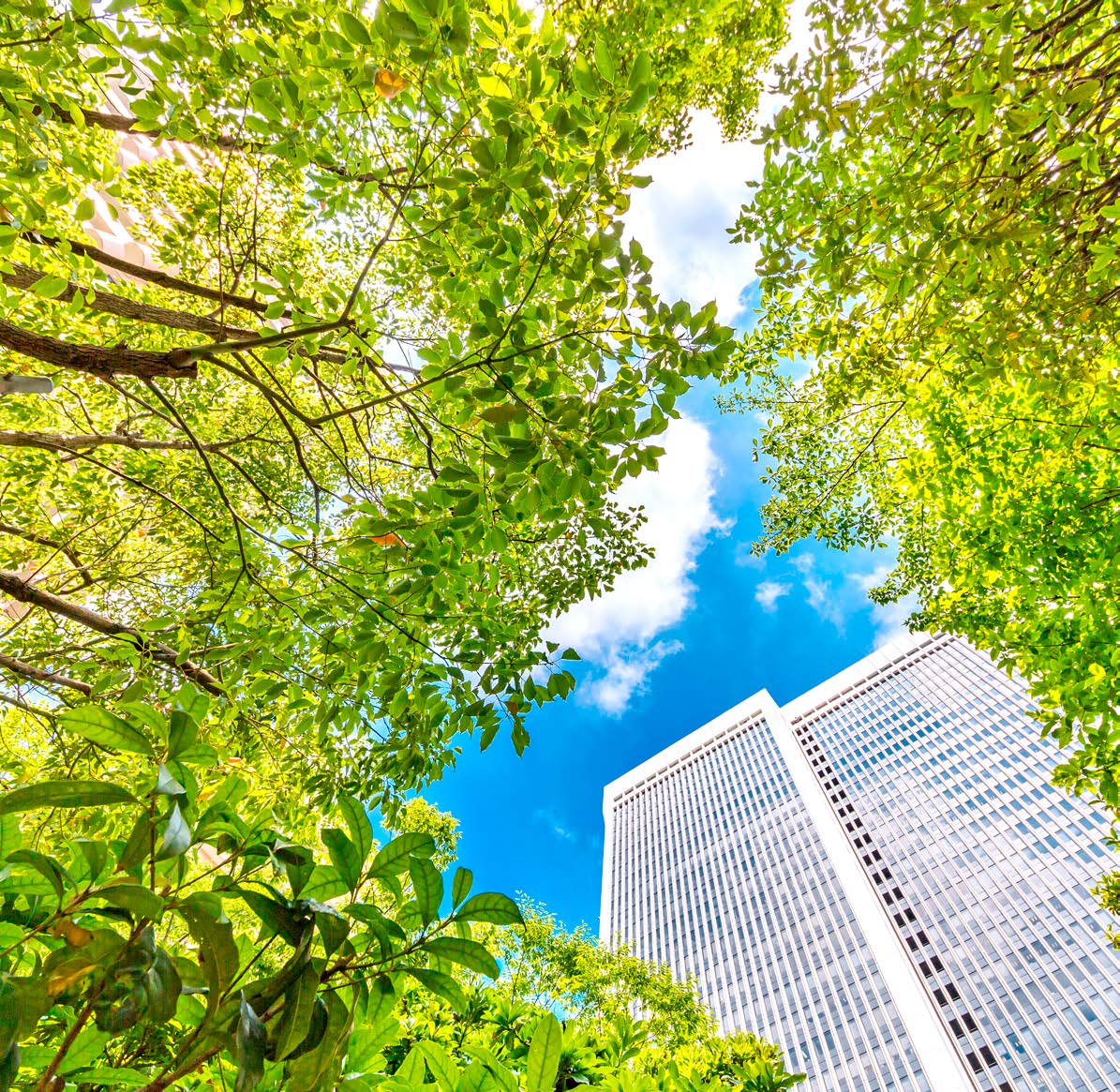
Material issues addressed
- Climate and energy
- Circular economy
- Biodiversity
- Emissions Water
SDGs impacted

Key Facts
Thermal Substitution Rate (TSR) has increased to 9.15% by maximising the usage of alternative fuels and launching of 'Geoclean'
22.4 Megawatt (MW) of WHRS commissioned and 55.8 MW WHRS under commissioning
Launched ACC ECOMaxX an eco-friendly range of ready-mix concrete for high performing, sustainable and circular construction
Capital-wise performance > Natural capital
Net Zero Pathway
We have pledged to achieve Net Zero emissions and have set ambitious targets for reducing our carbon footprint. These targets have been validated by the Science Based Target initiative (SBTi). Our goal is to reduce our Scope 1 emissions by 21.3% and Scope 2 emissions by 48.4% by 2030, taking 2018 as the baseline year. We are committed to achieving these targets through the adoption of sustainable and innovative practices across our operations.
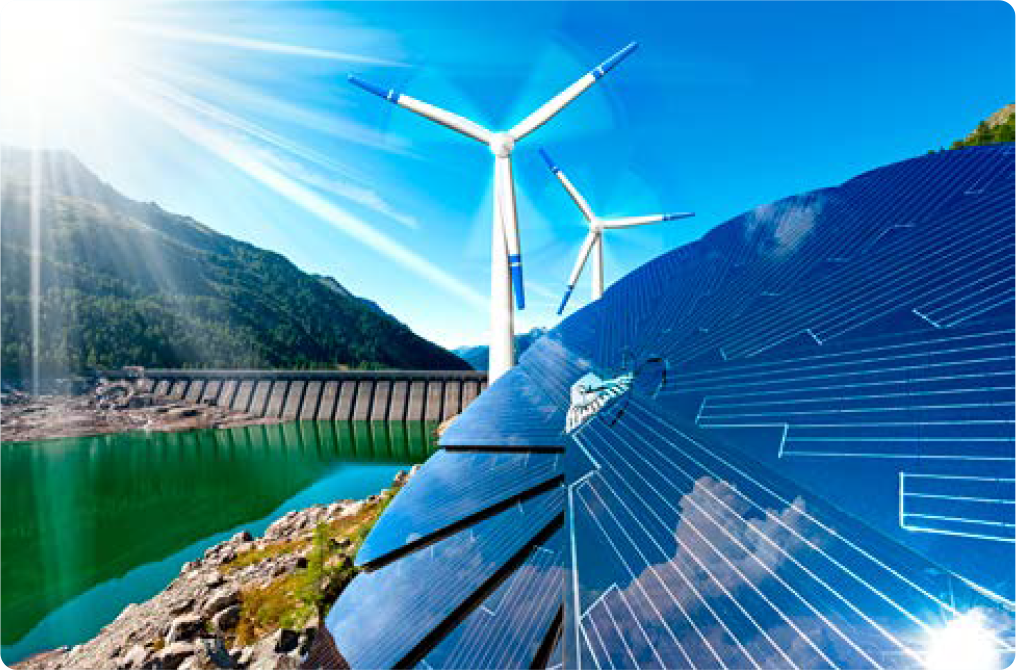
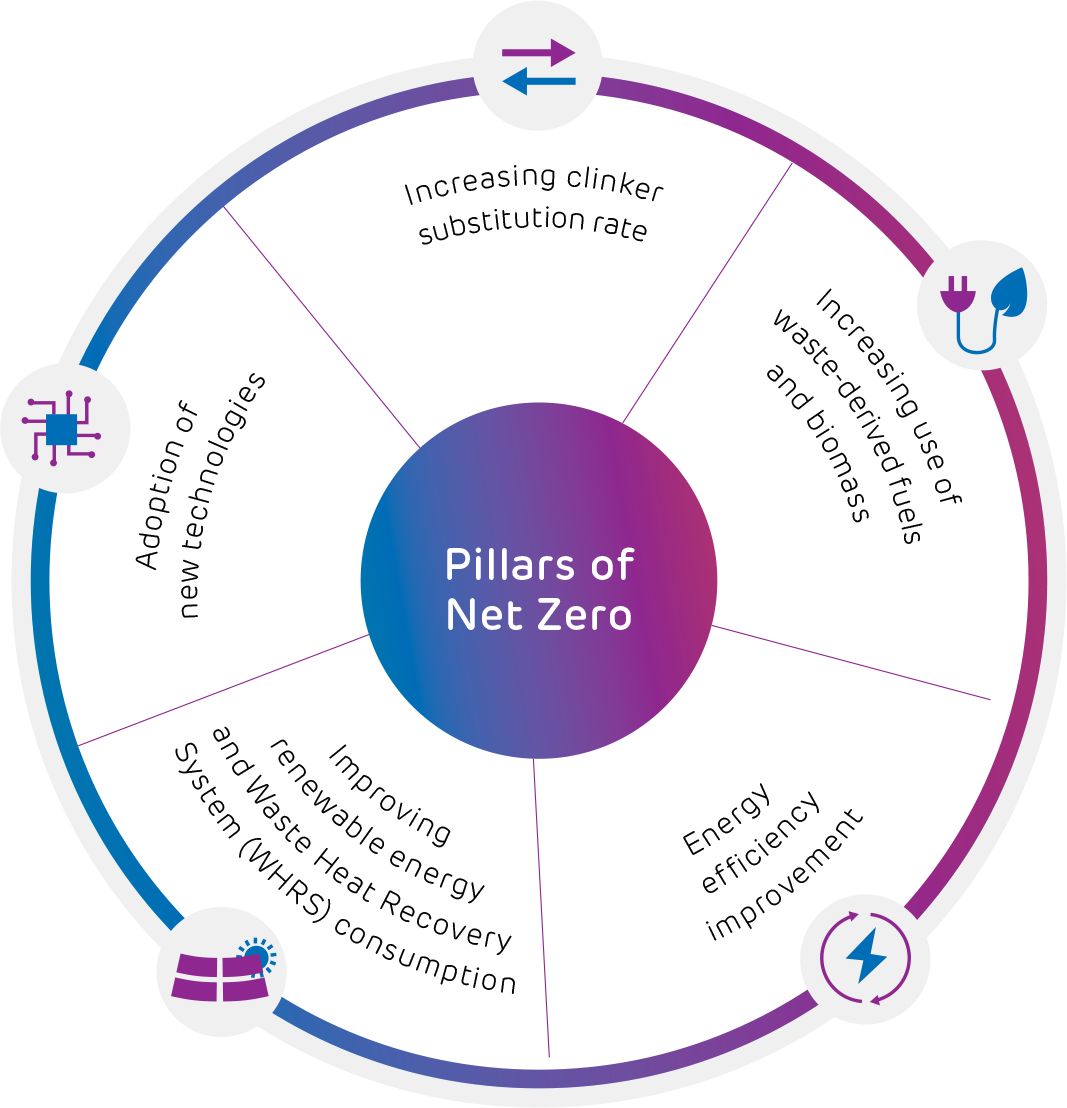
Climate and Energy
We made significant progress in our climate-related efforts. We have reduced specific net carbon emissions to 466 kg/t of cementitious materials during Jan'22 to Mar'23 period excluding CPP. This reduction is due to improvements in levers affecting CO2 emissions, such as the clinker factor and Thermal Substitution Rate (TSR). As a result, we have been able to reduce our carbon footprint in the same period.
Clinker Factor
We have improved our clinker factor by 1.5% during the period of Jan’22 to Mar’23, despite a marginal decrease in blended cement volume.
Thermal Energy
We have made strides in enhancing thermal energy efficiency, resulting in a slight increase of 72 units (3,107 MJ/tonne clinker in 2021 compared to 3,179 MJ/tonne clinker from January 2022 to March 2023) primarily due to reduced operations at our Maharashtra plant. Additionally, we have strategically allocated investments to enhance thermal energy efficiency, and these initiatives are advancing positively. These endeavours will contribute to a decrease in carbon emissions.
Renewable Energy and Waste Heat Recovery System (WHRS)
At ACC, we remain committed to our focus on green energy. We have invested in Waste Heat Recovery Systems (WHRS) installations at our plants in Himachal Pradesh, Madhya Pradesh and Chhattisgarh which are capable of generating 30.2 MW. Currently, we are in the advanced stages of investment for producing an additional 55.8 MW in Madhya Pradesh, Karnataka and Maharashtra. Moreover, we have planned to invest in solar energy for sourcing an additional 100 MW. With these initiatives, we aim to utilise green energy for approximately around 50% of our total energy requirements.
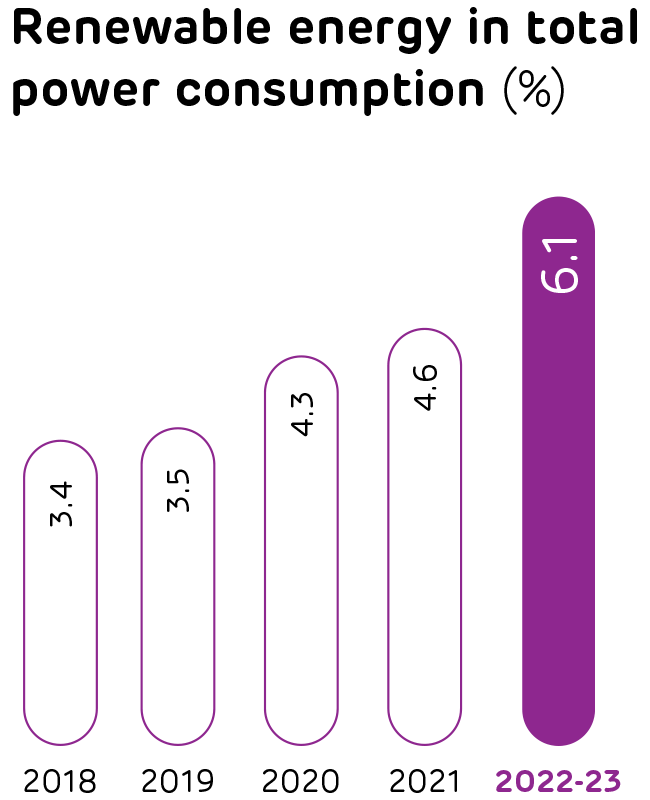
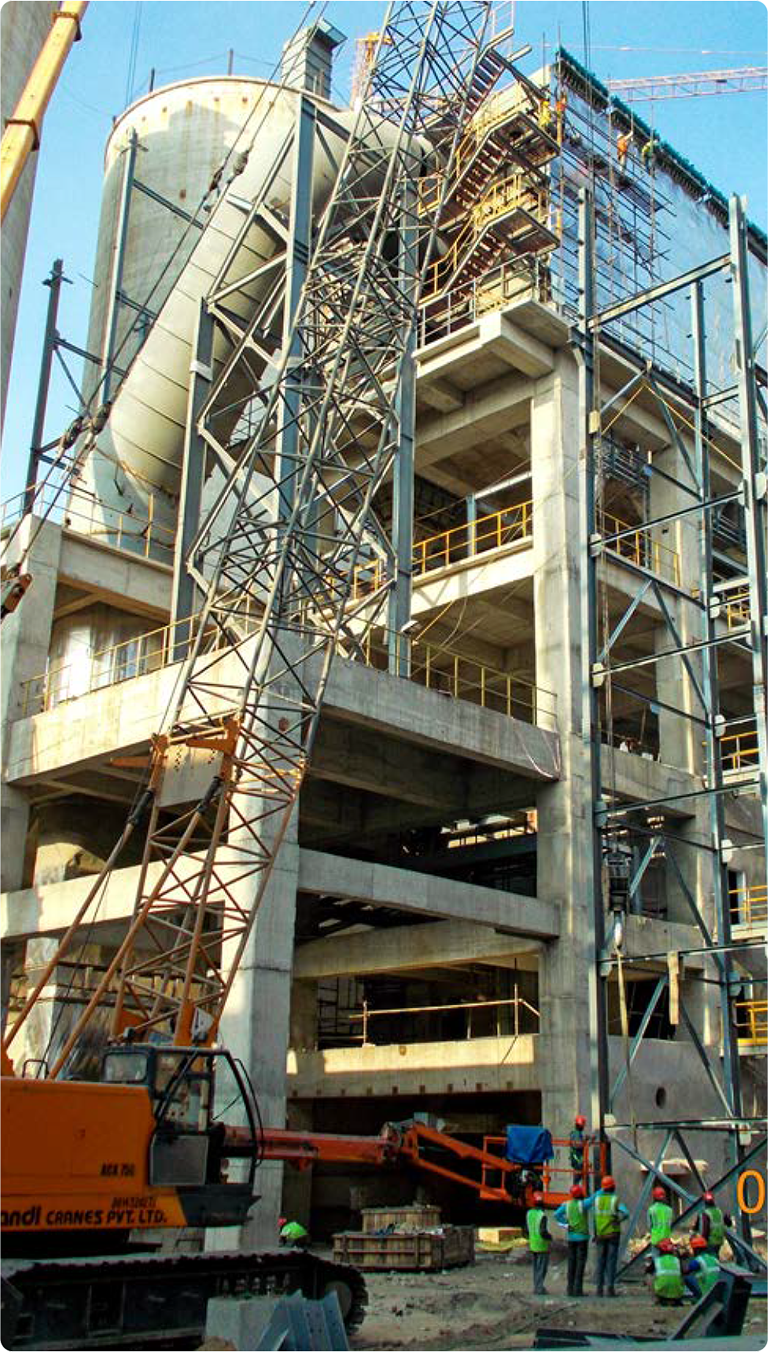
Score and ratings
| DJSI | CDP climate | CDP water | |
|---|---|---|---|
| ACC | 73 | A- | B |
| Industry max score | 89 | A | A |
| Best possible score | 100 | A | A |
Alternative Fuels and Raw Materials
We have established two pre-processing facilities and
enhanced co-processing at seven plants to promote
efficient disposal of hazardous and non-hazardous
waste. We also co-process Refuse Derived Fuel (RDF)
from municipal solid waste and biomass (non-cattle
feed) in our kilns.
Our waste management arm, Geoclean, helps us to
provide safe waste management solutions to various
industries and municipalities, while supplying us with
alternative fuels for utilisation in cement kilns. Coprocessing in cement kiln recovers
energy and recycles
minerals inherent in waste, thus contributing towards
a circular economy. In the past year, we have continued
to grow in the use of alternative fuels, with a total
consumption of 0.56 MT tonnes.
9.15 %
TSR for the period of Jan’22 to Mar’23
Circular Economy
At ACC, we are committed to adopting and promoting
the circular economy concept by utilising Waste
Derived Resources (WDR) from various industries in
our cement manufacturing process. To achieve this,
we have been incorporating waste materials from
power and steel industries, such as fly ash and slag, as
substitutes for clinker in our cement. This approach
enables us to co-process waste and support a circular
economy. In the reporting period, we consumed 8.52
MT of fly ash, 3.98 MT of slag, 1.3 MT of synthetic
gypsum, including Phosphogypsum, and 0.82 MT of
alternative fuels and raw materials in our cement
manufacturing process.
14.62 MT
Waste derived resources consumption

Water
We have taken several measures to promote water conservation and harvesting. These measures include closely monitoring our water consumption and withdrawal, enhancing water harvesting structures in communities, and optimising our processes.
As a result, we have reduced our specific freshwater consumption in cement operations from 74 litres/ tonne of cementitious material to 60 litres/tonne. We have also managed to reduce our specific water consumption to 126 litres/tonne of cementitious material, down from 136 litres/tonne in 2021. In addition, we have increased our contribution of harvested water used in our cement operations to 52.4% of our total water consumption.

Biodiversity
We continued with our efforts towards nature conservation and biodiversity preservation during the period of Jan'22 to Mar'23. We have been taking measures to conserve specific flora and fauna, as well as setting up plantations at many of our plant locations and colonies.
Emissions
We understand that emissions are an inherent part of cement production, and we are aware of our responsibility to limit carbon emissions. We have made it mandatory for all our sites to measure and manage air emissions as much as possible. During the past year, we focused on improving our emissions and the surrounding environment.
Dust Emission Control
We conducted maintenance activities through both in-house and third-party teams for the upgradation of Electrostatic Precipitators (ESP), as well as the replacement of damaged bags and other necessary measures. Through these efforts, we were able to achieve reduced stack dust emissions in our cement plants with levels consistently maintained below 30mg/Nm3.
NOx Emission Control
We have undertaken primary and secondary measures to control NOx emissions and implemented Selective Non-Catalytic Reduction (SNCR) systems in our integrated cement plants.
SOx Emission Control
We take our responsibility towards the environment seriously and ensure that our emissions are within the limits prescribed by the pollution control authorities. As a result, we are not required to undertake major emission control measures regarding SOx emissions. Cement plants must report on ambient air quality, effluents, and process emissions on the websites of regulatory authorities, and we comply with this requirement. We monitor our plants’ stack emissions, including dust, NOx, and SOx, through the Continuous Emission Monitoring System (CEMS) that has been commissioned at most of our plants.